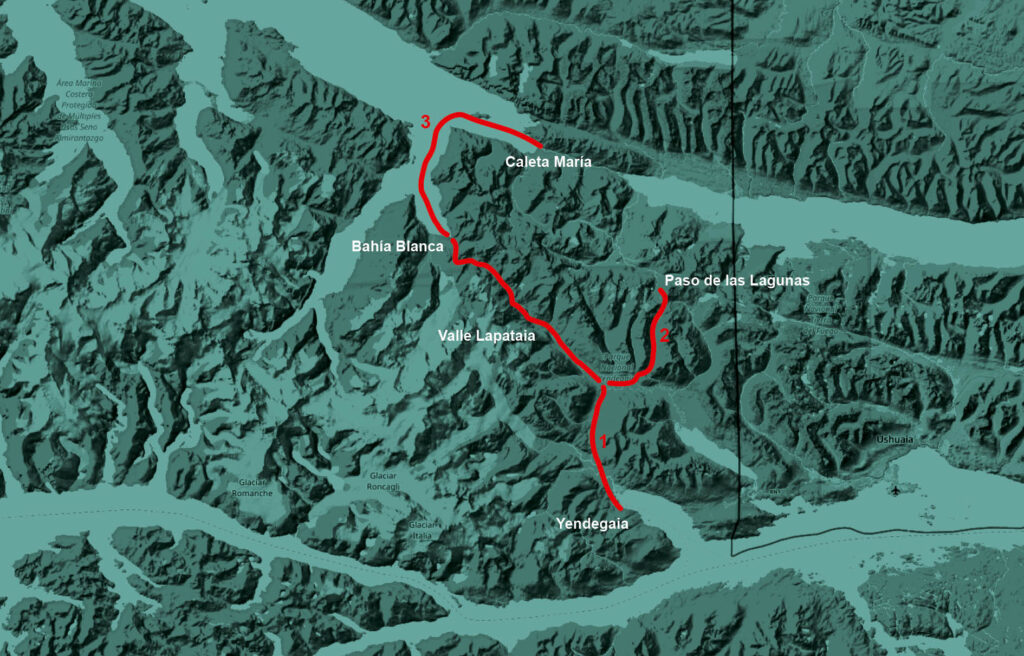For years, the pass between Yendegaia and Admiralty Sound had been the subject of attention as a possible “Indian pass”, a route of communication between the different ethnic groups that passed through these areas. This had been attested to by the English missionaries Thomas Bridges and Fred Lawrence at the end of the 19th century when they noted the presence of Kawesqar and Selk’nam arriving from the western mountains to the mission enclave. But such a move may have been motivated precisely by the existence of the mission. Anne Chapman had argued that the southwestern boundary of the Selk’nam was the impassable Azopardo River. On the other hand, the artist and explorer Rockwell Kent describes a characteristic shelter construction of canoe hunter-gatherers halfway from Yendegaia to Bahía Blanca. The discovery made by the Terra Ignota team in March 2021, an archaeological site with non-local worked lithic material about ten kilometers from Bahía Blanca, proves the existence of this pass, but raises new and intriguing questions about the producers of this evidence and the real possibility of a point of contact between the three ancestral ethnic groups; Selk’nam, Kawesqar and Yagán.
However, this is not an easy passage today, nor should it have been in the past, especially if it was made by entire families, like those in Bridges’ and Lawrence’s account. It remains to define the age and characteristics of the movements in order to better understand the local human geography. Yendegaia is a bay littered with sites; we are not sure if something similar occurred at the other end of the Indian Pass. There are archaeological sites scattered widely throughout these bays and inlets, but we do not yet know the other elements of the exchange process on the “pass of communication” that we are beginning to glimpse through our findings.
The idea of this exploration in the “intercultural contact zone” is to collect information and record dialogues in situ with the different actors involved with regard to cultural and natural objects and subjects. Beyond the apparent aim of testing the doubts suggested above, it is important to analyze in an interdisciplinary group the potentialities of the cross-fertilisation of knowledge and the theoretical development of the idea of a museum park (contemporary archive).
At the same time, individual research projects will be carried out in the territory related to different aspects of archaeological research, the particular environmental conditions, their ethnocultural implications and the search for new forms of representation of local, scientific, artistic and museographic knowledge.
We will access the territory in 3 groups from different directions:
Route 1:
Access route from Yendegaia. Possible access route from the Yagan community to Bahía Blanca.
Route 2:
Land access by Route Y-85. Descent to Lapataia Valley on foot by the walkable access route.
Route 3:
Almirantazgo Sound – Parry Fjord. This maritime access route to Bahia Blanca.

